Dieser Beitrag ist auch verfügbar auf: Deutsch
Polar has kept us waiting for five years, but now there is finally a new top model from the Finnish manufacturer. The V800 was getting old, so the big question was whether Polar would be able to bring a competitive product to the market that could keep up with Garmin and Suunto. One part of the conclusion up front: it (somehow) worked.
Inhalt / Content
Background
Who else remembers the Polar S610? Twenty years ago it was all about coded transmission of heart rate from the strap to the watch and transmission of training data via infrared (!) to the PC. I used the watch for a long time and could not imagine ever needing more functions. Until one day GPS was added…
After using that watch I not only had a long training break, it took even longer until I wore a Polar watch again. The V800 had already passed its zenith then, but was still usuable. Like native support of the Stryd-Footpod. But I still wasn’t really sold on Polar.
With all the announced features, the Vantage V came just in time. Unfortunately, it was already foreseeable that the watch was not yet finished when it was delivered: many features were only to be upgraded over time. The update schedule is finished now and I can show all functions of the watch here. This article is based on the firmware 3.1 of February 2019.
ReviewPolar Vantage V
Sponsored Post: Polar provided me with the product for this review at my request. This had no influence on the content of my post. The article is written indipendently and reflects exclusively my personal experiences. [php snippet=1]First Impressions

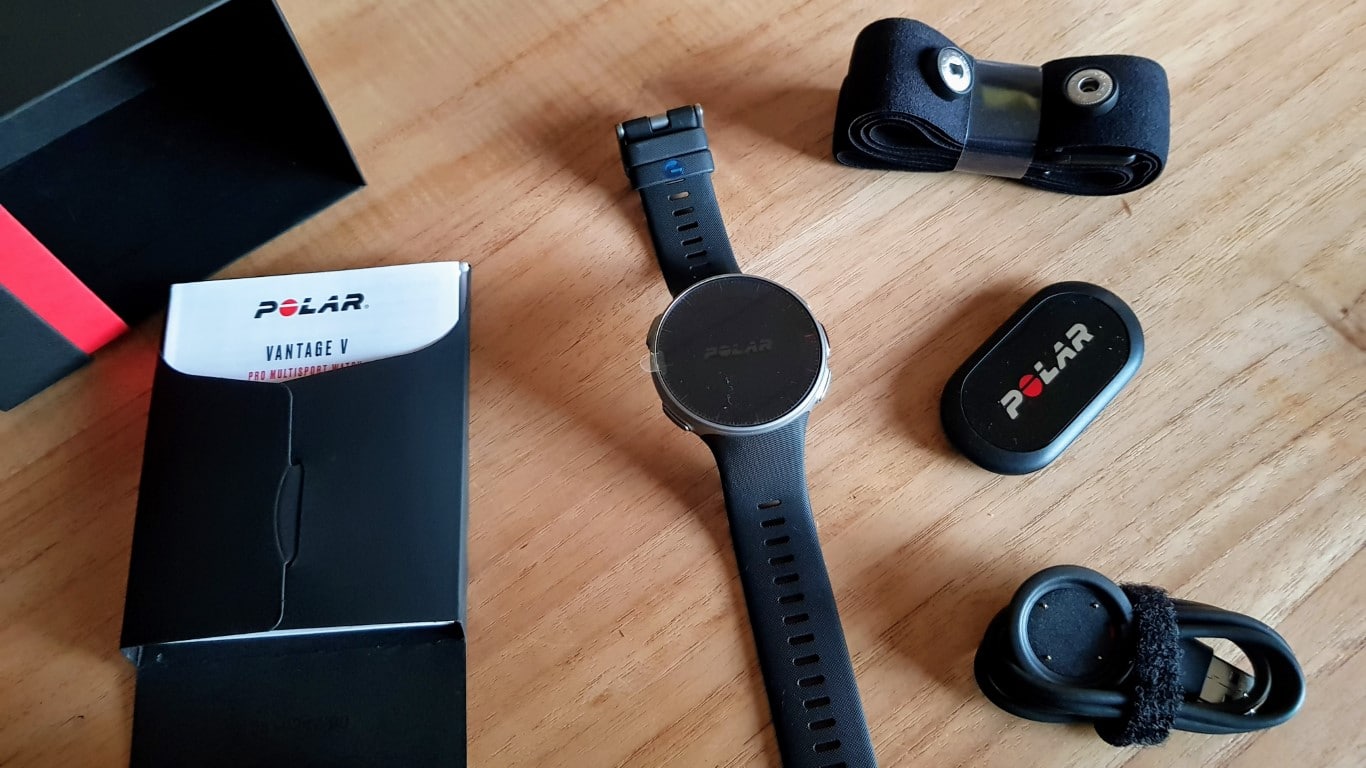
As soon as I saw the first pictures of the watch I was surprised that Polar switched to a round format. I always found the V800 a bit clunky, so I really appreciated it – no matter if it might make the watch look similar to other manufacturers. The format is simply much more practical.
With the Vantage V, Polar has opted for high-quality materials – and you can feel that when you hold the watch in your hand. The case is probably made of stainless steel and has a matt grey finish. A soft silicone strap is attached to it, which can be replaced. The colored display has a resolution of 240×240 pixels and is protected by gorilla glass. The long case pushers are slightly ribbed, and the start button is discreetly set off in red, as on the V800.
The back side is mostly occupied by the new Polar Precision Prime Sensor. The four metal contacts have a double function. On the one hand they are the interface to the outside for the sync cable and the charging function, but on the other hand they are also used to measure skin contact. The charging cable ends in a small “plate” with four contacts that hold magnetically to the Vantage V.
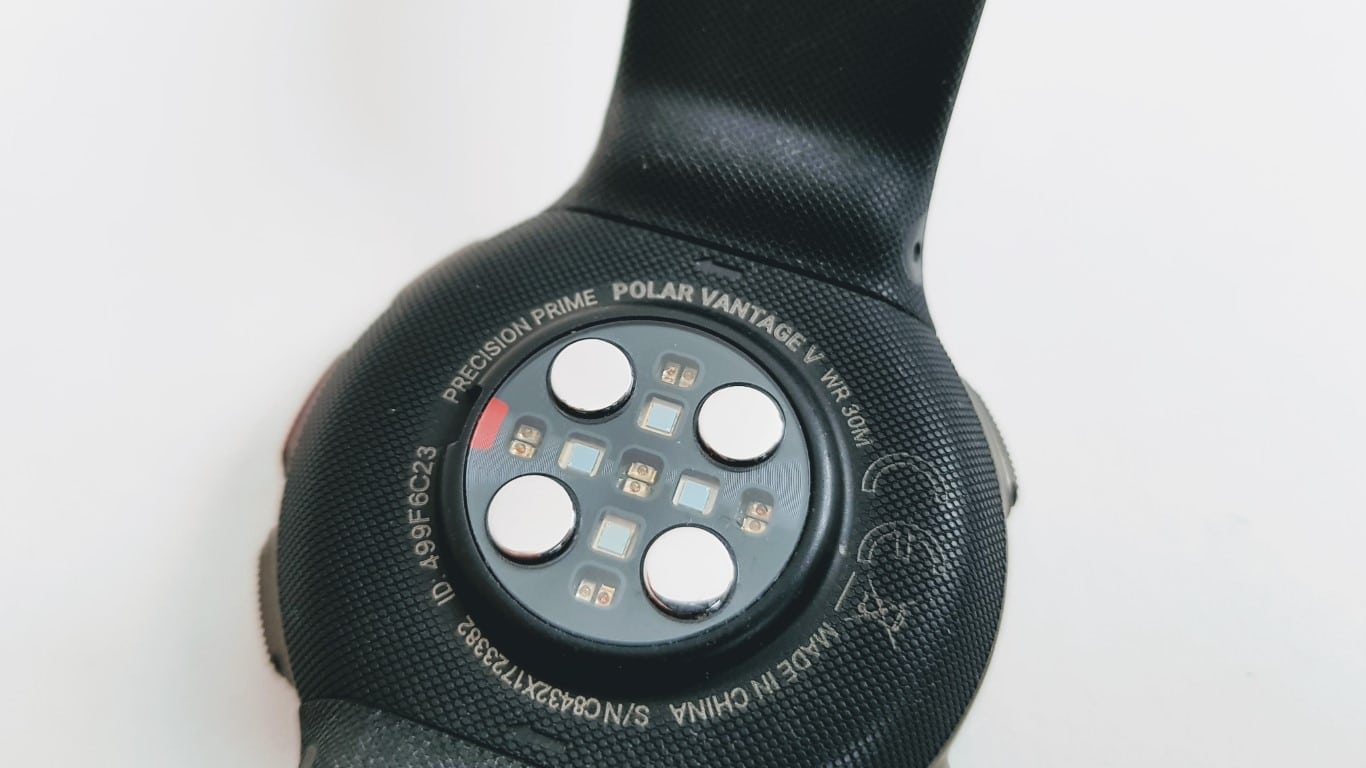
With a diameter of 43 millimetres, the watch is certainly not small, but it is still comfortable to wear even on more delicate wrists. Of course, the weight of only 66 grams also helps here. The bracelet is also available in two different lengths.
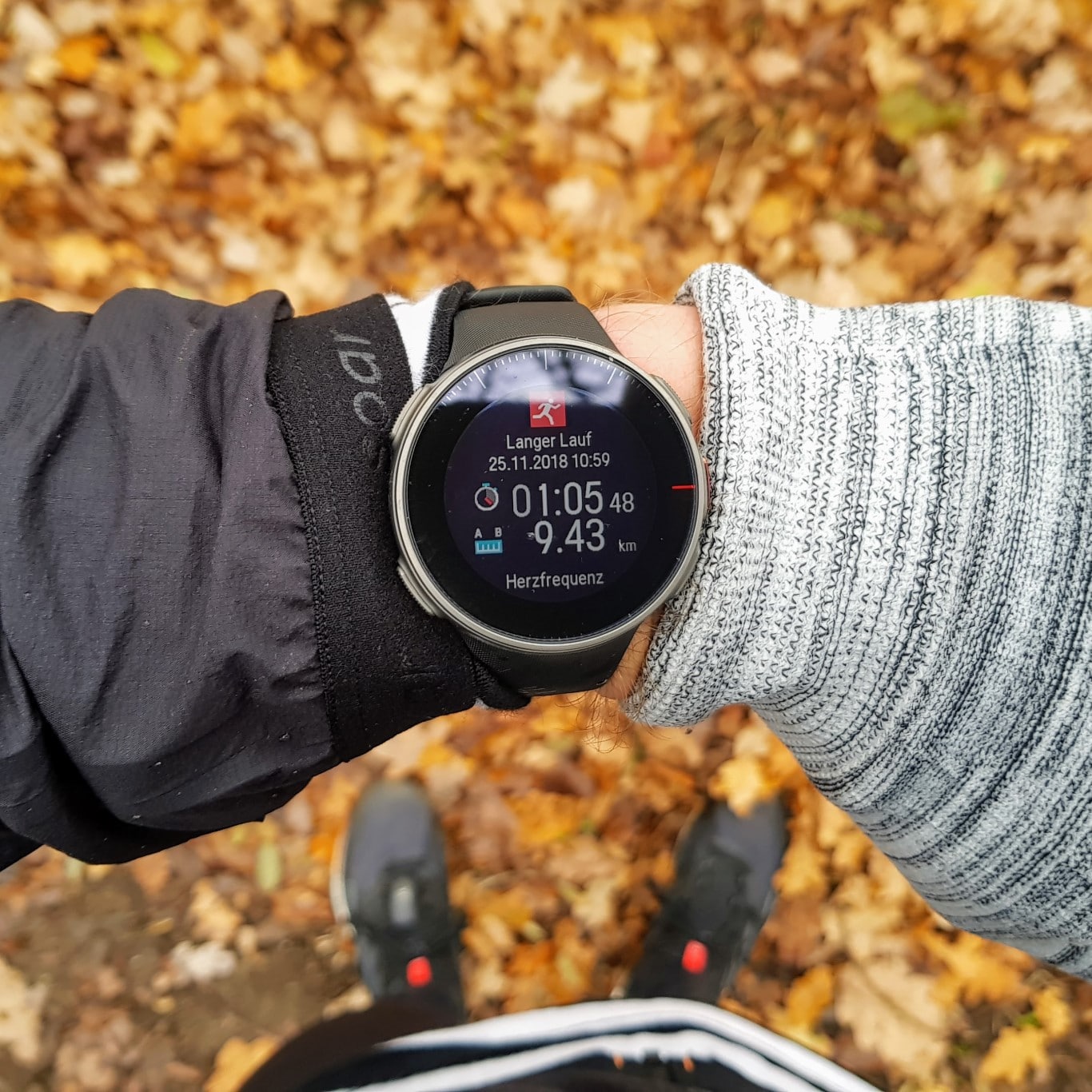
Start-up
The setup of the Vantage V was very fast for me, because I am already registered at Polar Flow and general data and settings are stored there. Of course, either the Flow app on the mobile phone or Polar FlowSync on the PC is required. If you want to use Polar Running Power, you should definitely enter the current weight in this process.
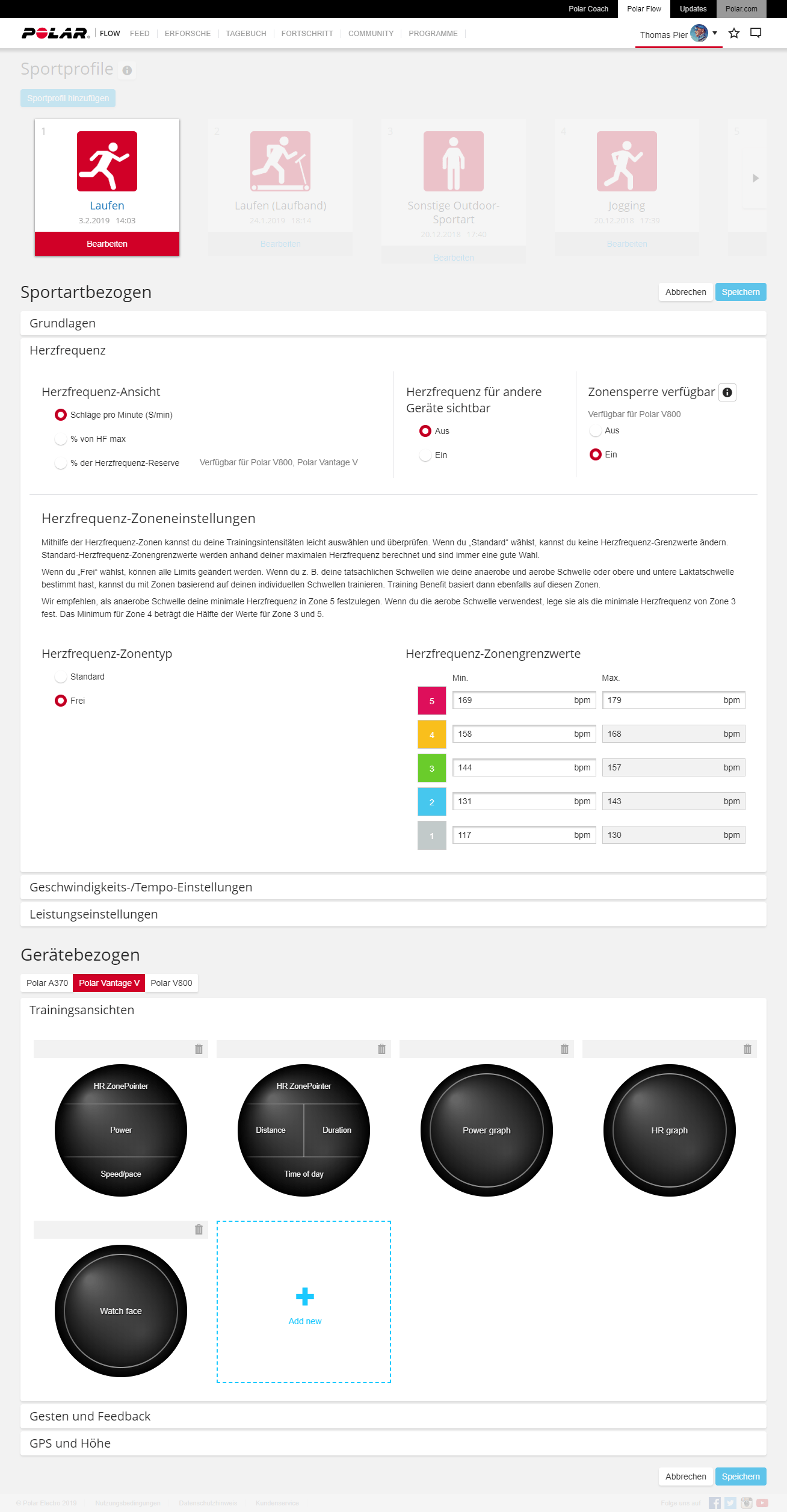
In the second step, you should then take care of your sport profiles and thus determine which parameters you want to see on the display for which sport. You can do this both via Polar Flow on the web and via the app. In both places, you can also make the settings for your heart rate, pace and power zones. The descriptions of the zones are very well done and also help to set individual zone limits if needed.
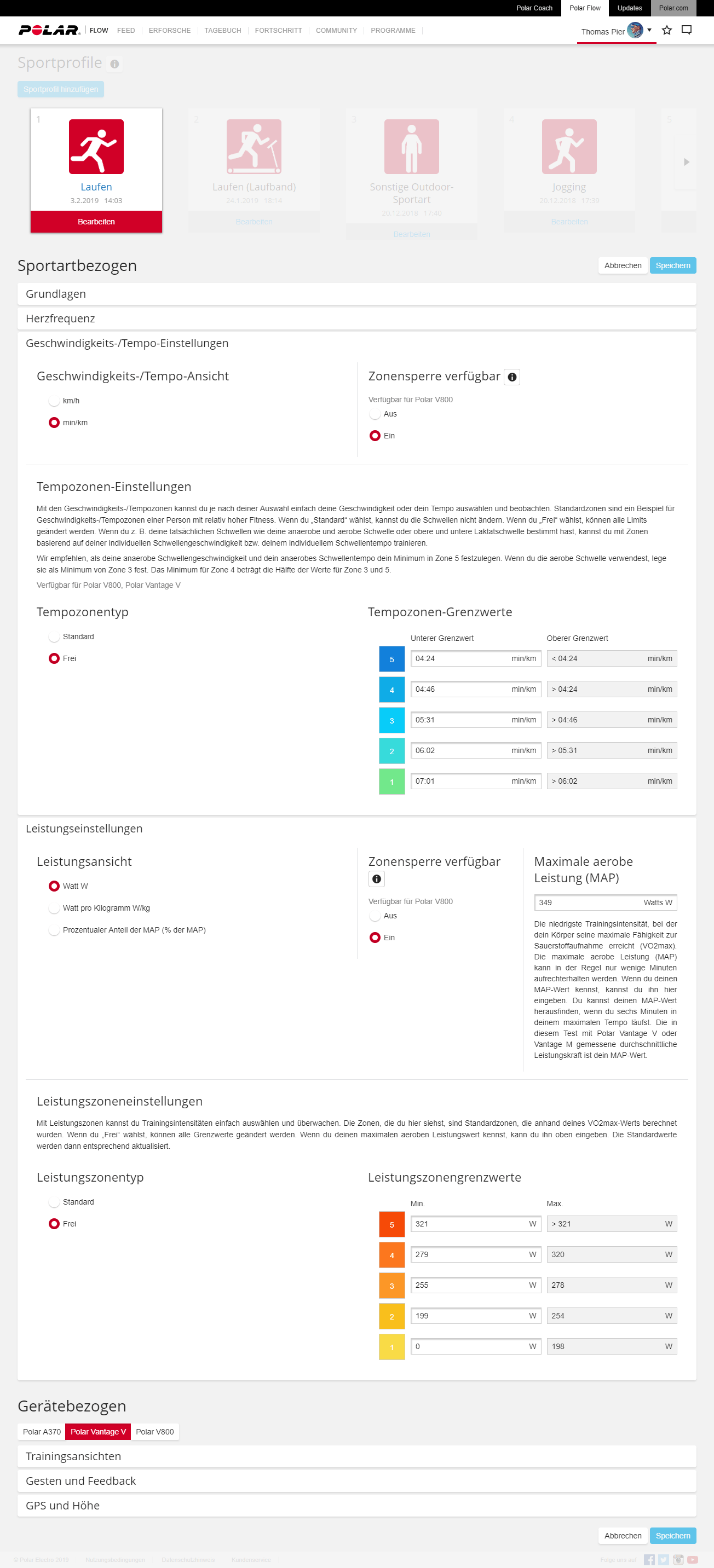
Problems
Actually, the assumption is that you will receive a finished product at the start of sales. This may still have some minor problems, but these should be quickly ironed out with firmware updates. This is not quite the case with the Vantage V, as many functions were missing, which were only added in the course of approximately half a year. These include route guidance, the fitness test and the Smart Notifications. Certainly no unnecessary accessories and many runners felt like beta testers because of that. But on the other hand, it wasn’t much different with the introduction of the V800, and Suunto hasn’t exactly spilled glory on itself with the Spartan Ultra and now Suunto 9.
There are also a few criticisms to be made about the delivered functions. For example, some users sometimes lacked some distance at the beginning of a session and there were complaints about the background light being too weak. Both of these problems were solved with an update in December. Other problems like bad GPS performance or unusable OHR measurements seem to occur sporadically.
But to be honest: I myself have been very satisfied with the watch from the beginning and can’t really relate to any of the points. Ok, there were functions missing, but for me (!) they are not critical for my daily training. The Orthostatic Test was directly on board, which I would have expected on the “Coming soon” list. The rest were rather small things like not being able to turn off the automatic activation of the backlight (turn wrist) at night. But that has been fixed in the meantime.
You get information about the planned updates here.
Using the Watch
User interface
Each manufacturer has its own logic of key assignment. Polar has five keys: three on the right and two on the left of the housing. The middle right key is coloured red and not without reason is highlighted like this: it is used to confirm entries and start workouts.

The other two buttons help to navigate through lists and to select options. The button for the light (and the battery indicator) is located in the upper left-hand corner, while a press in the lower left-hand corner either jumps back in the menu, interrupts or ends a workout or starts the synchronisation with a long press.
You need to get used to the Polar Vantage V’s key pressure point. The stroke is initially short and light until you encounter resistance. Only an even stronger pressure then triggers the contact. Everything works perfectly, you just have to get used to pressing hard enough. At least it was like that with me.
The watch can also be operated via the touch screen. By wiping to the left or right you can switch between the displays, up or down scrolls and with by touch you can see detailed information. During a workout the touchscreen is deactivated, but you can still take a split time by pressing firmly.
Display
Polar has changed the housing shape of its new top model from square to round, which means of course that the display is now round – and coloured! Currently, it is set to show white or colored elements against a black background. Maybe it will be possible to reverse this in the future.
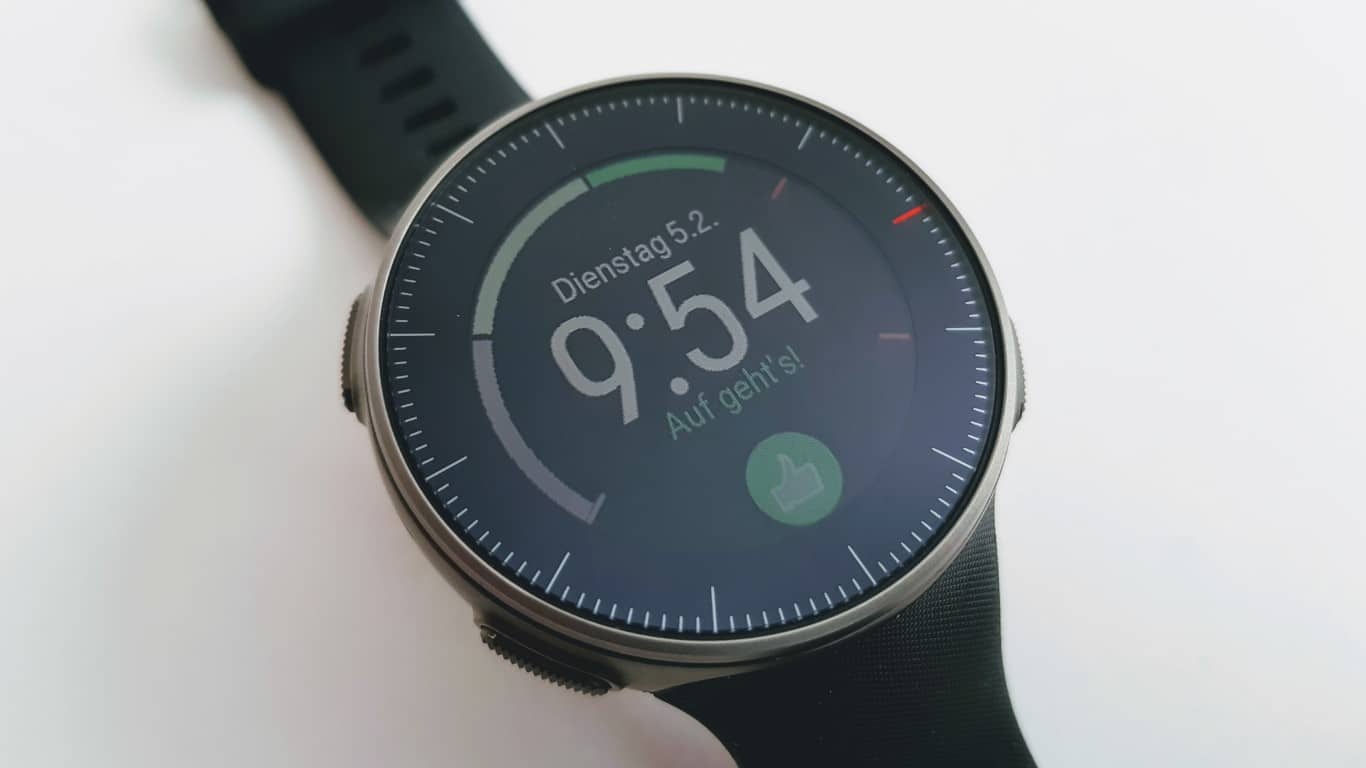
Overall, I find the display easy to read, even if it could be a bit brighter at times. Turning the wrist automatically turns on the backlight, but that’s not always helpful.
There are various ways of displaying the time (switchable between analogue and digital), which also allow to show additional elements. Besides the date (including Polar logo…), this could be the daily activity target, the heart rate, the current cardio-load status or the last training session.
Connectivity
In addition to the included USB cable, Polar exclusively uses Bluetooth LE for the Vantage V. This is used to connect to external sensors such as the H10 chest strap, cycling sensors or the Stryd footpod.
Likewise, the mobile phone is used to transfer data to the flow platform. The synchronization to the flow app can be triggered by a long press on the button in the lower left corner, but also occurs sporadically via an automatic function (supposedly every hour).
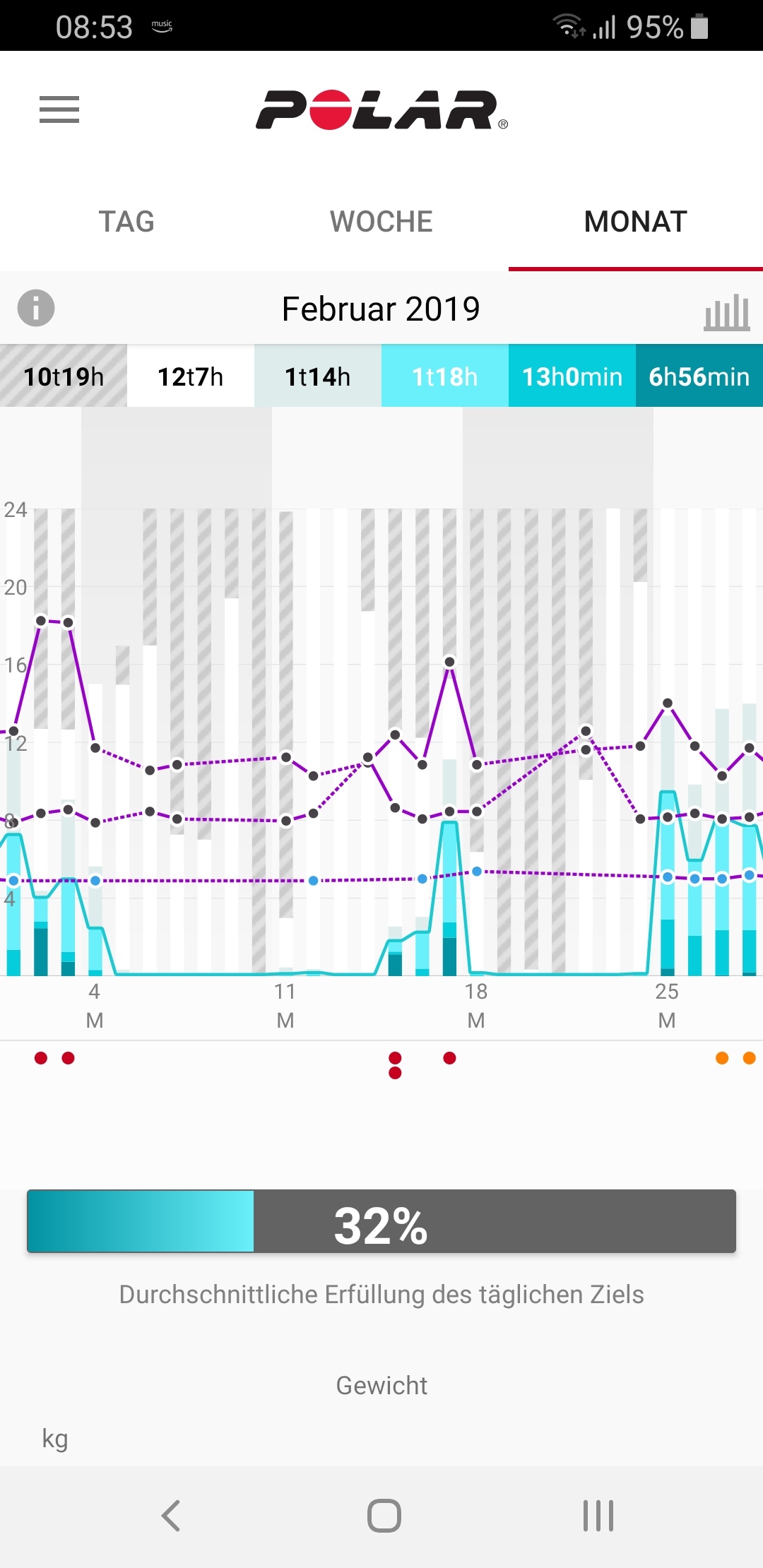
If you are using multiple Polar products, you may need to manually intervene before synchronizing. Only the device marked in the app will be used for the process.
Activity Tracking / Polar Sleep Plus
I’m not sure about Activity Tracking in a running watch… Do runners really have to count their steps in everyday life? But of course you don’t have to use it.
On the other hand, I am a big fan of the sleep recording. As flawed as it may be (no device can measure whether I am really asleep at the moment), the sleep duration alone and my own assessment of sleep quality are worth a lot to me. After all, this is an important part of recovery.

Optical Heartrate
In the Vantage V, the “Polar Precision Prime” is used for the first time – a new and, if one can believe the name, highly precise optical heart rate sensor. No less than 9 LEDs in red and green are used for this purpose – another one in orange is available but apparently not used. In addition, to improve the measurement quality, it relies on four skin contacts and the inclusion of motion sensors.

Indirectly, this shows how difficult the measurement on the wrist seems to be – especially in motion. As a pioneer in heart rate measurement, Polar is naturally keen to set the standard in this area. Or at least to perform really well. And indeed, the Vantage V cuts quite a fine figure here. If the watch sits tight enough on my wrist (about 1-2 holes tighter than in everyday life), the results were very reliable and absolutely comparable to the chest strap measurement.

It must be said, however, that the optical measurement of heart rate can vary from person to person, but on the other hand, experience has shown that the reliability will be further improved through firmware updates. Polar itself states that currently not all possibilities of the sensor are used… In case of doubt, however, the watch can still be coupled with the H10 chest strap, which would also be necessary for other functions.
Wrist Power
So it seems like “Running Power” as an additional metric is slowly becoming a permanent feature! The Polar Vantage V is the first watch that can measure running power on the wrist (without any external sensors). It is based on pace and barometer – and certainly also on weight and acceleration sensors.
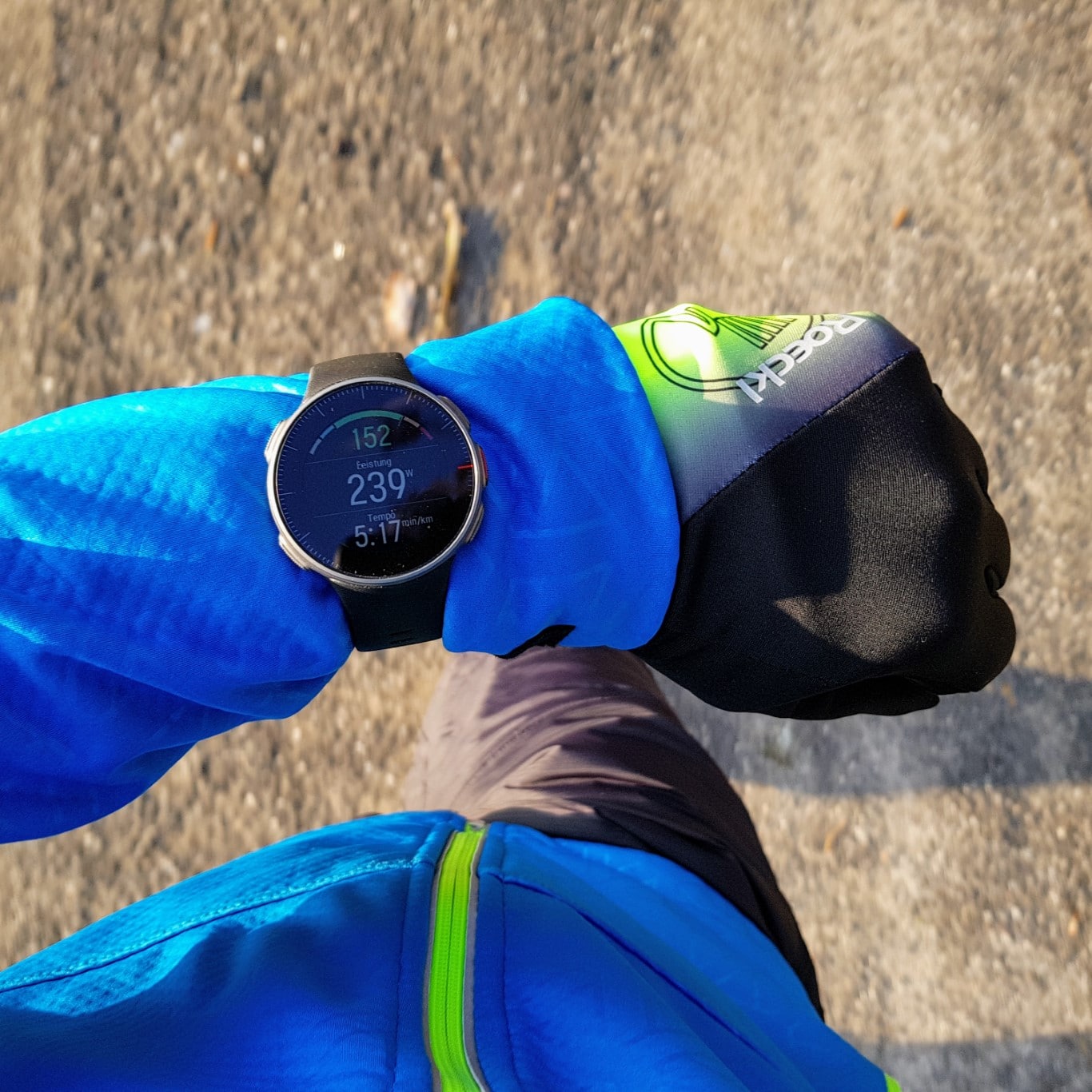
Polar also processes data from external sensors such as the Stryd and puts the watt values on a par with established metrics such as heart rate or pace. In any case, performance zones can be defined. It remains to be seen (and hopefully!) if there will be a power lock or if power can even become a target for the training units.

The power measurement of my runs was comprehensible and the changes were comparable with the Stryd. The power values themselves, however, are quite a bit higher and are more comparable with the “Garmin Running Power” values.

Polar and Garmin both rely on GPS and the barometer as the basis for calculating power, which leads to the same problems: the power values are only as good as the quality of the GPS signal. So probably much worse in the forest, not available at all in the tunnel and on the treadmill! To me, this limits the possibilities of use considerably, because performance tests on the treadmill are not possible this way. The pacing according to power in big cities due to the bad GPS reception is also not possible. So I will definitely stay with the Stryd as a power source.
However, even this is currently still causing problems: Polar uses the power to assess the muscular load during running and thus completes the data basis for Smart Coaching. If the external sensor fails (battery empty), power is measured at the wrist – with significantly different values as shown above. This then leads to incorrect calculations of the training load. Unfortunately, the measurement at the wrist cannot be switched off either.
Smart Coaching
Strictly speaking, Smart Coaching is not a function of the watch and belongs more to the description of “Polar Flow”, which I would like to deal with in a separate article in order not to go beyond the scope here. But the data for it is of course determined by running with the watch and can be seen for the most part on the Vantage V.
Training Load Pro
This is about assessing the strain that the training puts on the body. For this purpose, three factors are determined: the cardio load of the cardiovascular system, the muscular load caused by the training sessions and the personal assessment of the training load via the RPE system.
Cardio Load is based on the training impulse calculation (TRIMP) and is calculated for each workout based on the HR data. But Polar does not stop at calculating this value: it is immediately compared to the loads of the last 90 days and qualified. A scale of points and a text (e.g. “medium”) help to classify the load.

Even more significant is the “Cardio Load Status”, which can be checked both via Flow and on the Vantage V itself (!). For this, the acute load of the last 7 days (stress) is compared with the chronic load of the last 28 days (tolerance). This is a proven procedure and is done in the same way, for example, at TrainingPeaks. From this, Polar derives a personalised feedback whether the training load is currently “not challenging”, “maintaining”, “building up” or even “overchallenging”.
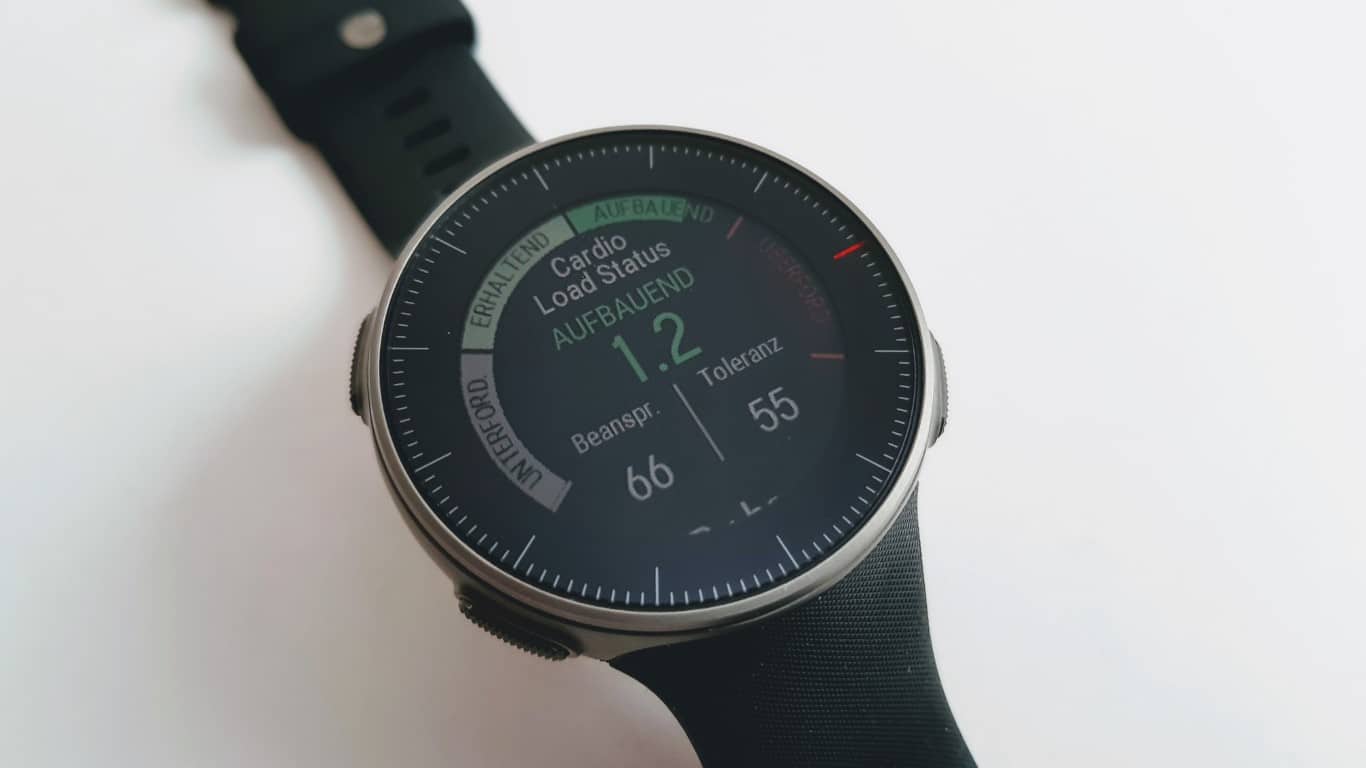

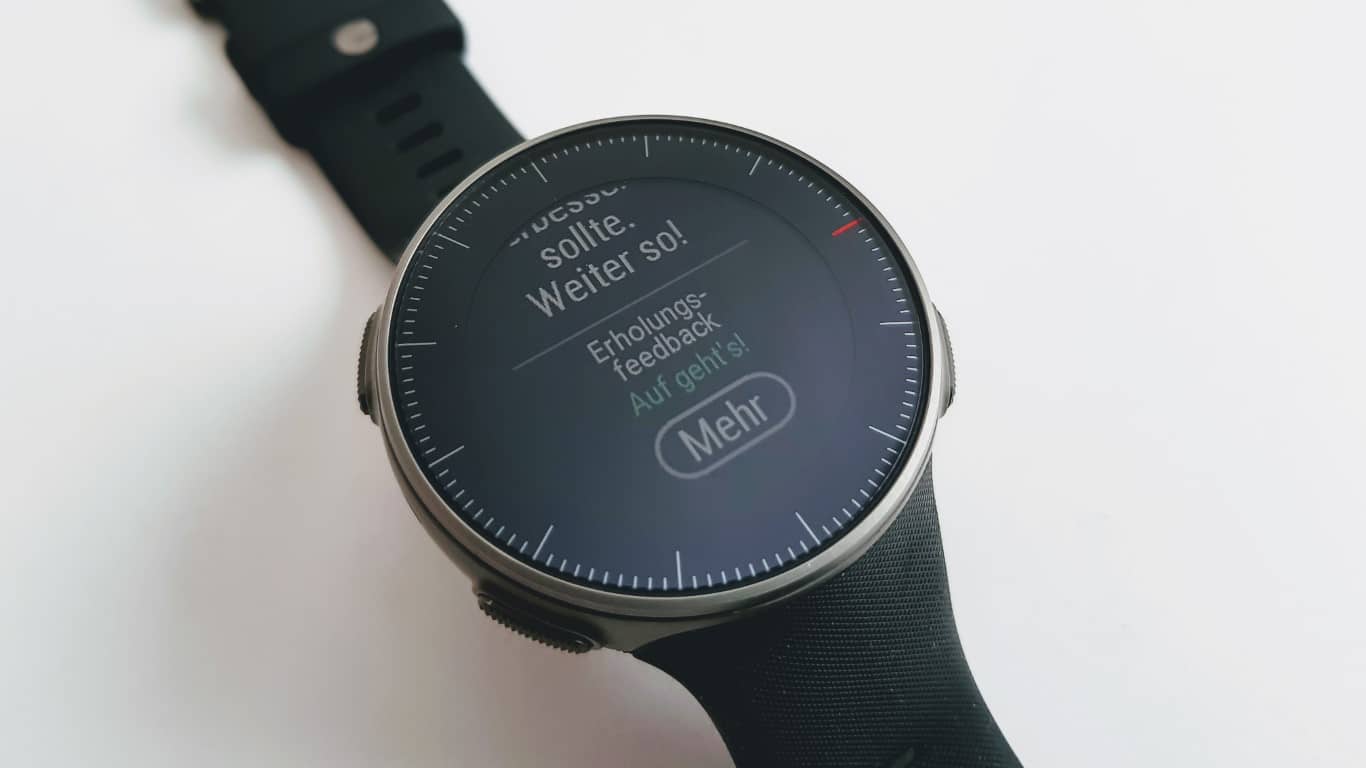
The long-term development of the Cardio Load Status’ can be viewed in the app and in the Flow web service. I would also like to see a preview that takes already planned training units into account. One or two weeks would be enough for me to see if the planned load is too high.
Hint: using the app, you could benefit from displaying information in landscape format.
Recovery Pro
On the other hand, Polar’s Orthostatic Test on the Vantage V provides a very good way to determine your recovery status on a daily basis and to make training decisions afterwards. In order to get reliable information, you should do the test about three times a week and answer the recovery questions daily.

The Orthostatic Test measures the heart rate and its variability for two minutes in a lying position and then for the same amount of time in a standing position. The deviation from the average values is then used to draw conclusions about recovery. You get a training recommendation in short form (“Train more”, “Let’s go!”, “Train light”, “Train light or pause”, “Pause or train lightly”, “Risk of injury/illness”, “Don’t overdo it!”), an indication of the recovery of the cardiovascular system and feedback on your long-term training habits.

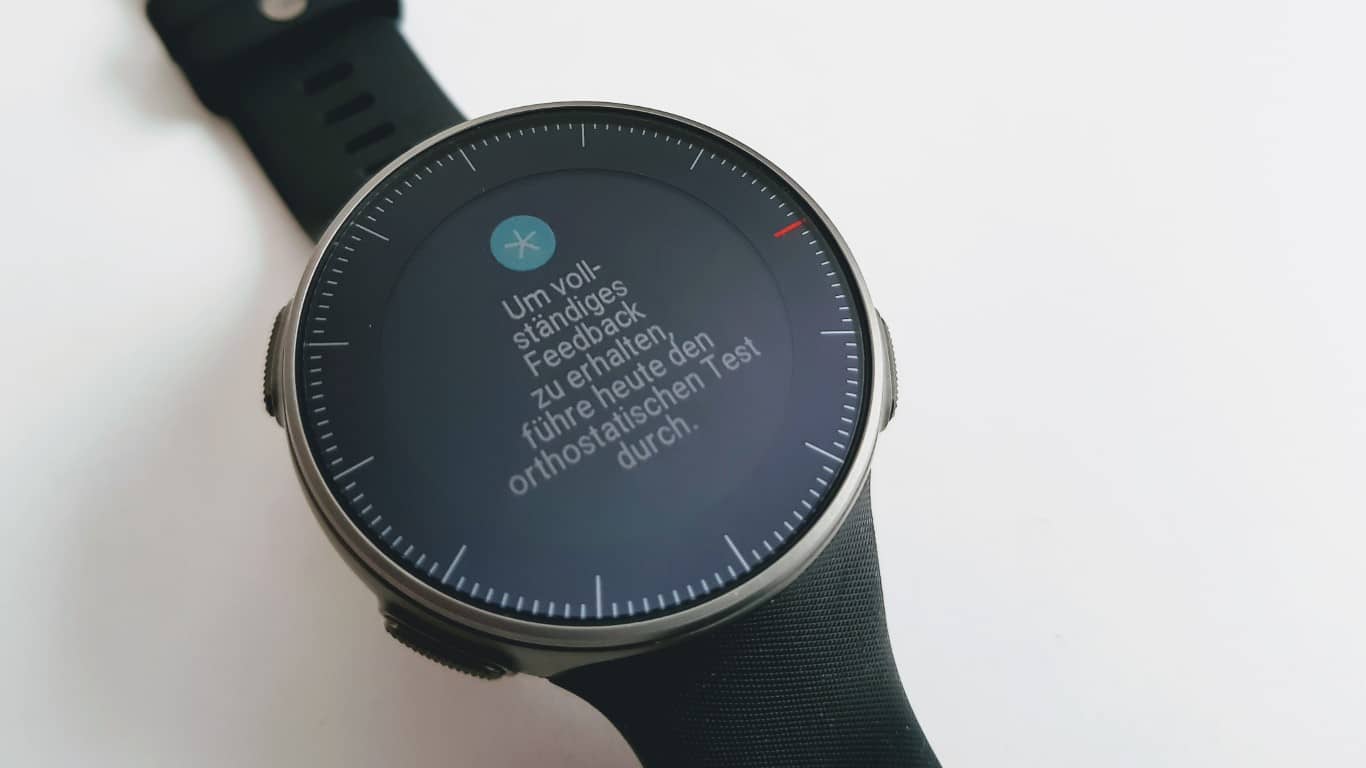
The information is always available on the Vantage V by wiping up the smart coaching screen. Unfortunately, a similar summary is not found in the app or on the web platform.
Sleep Plus
When the Vantage V is worn at night, it automatically determines when you fell asleep and woke up based on the movements of your hand. Even short or longer interruptions of sleep are determined in this way and presented in a sleep analysis on the following day.
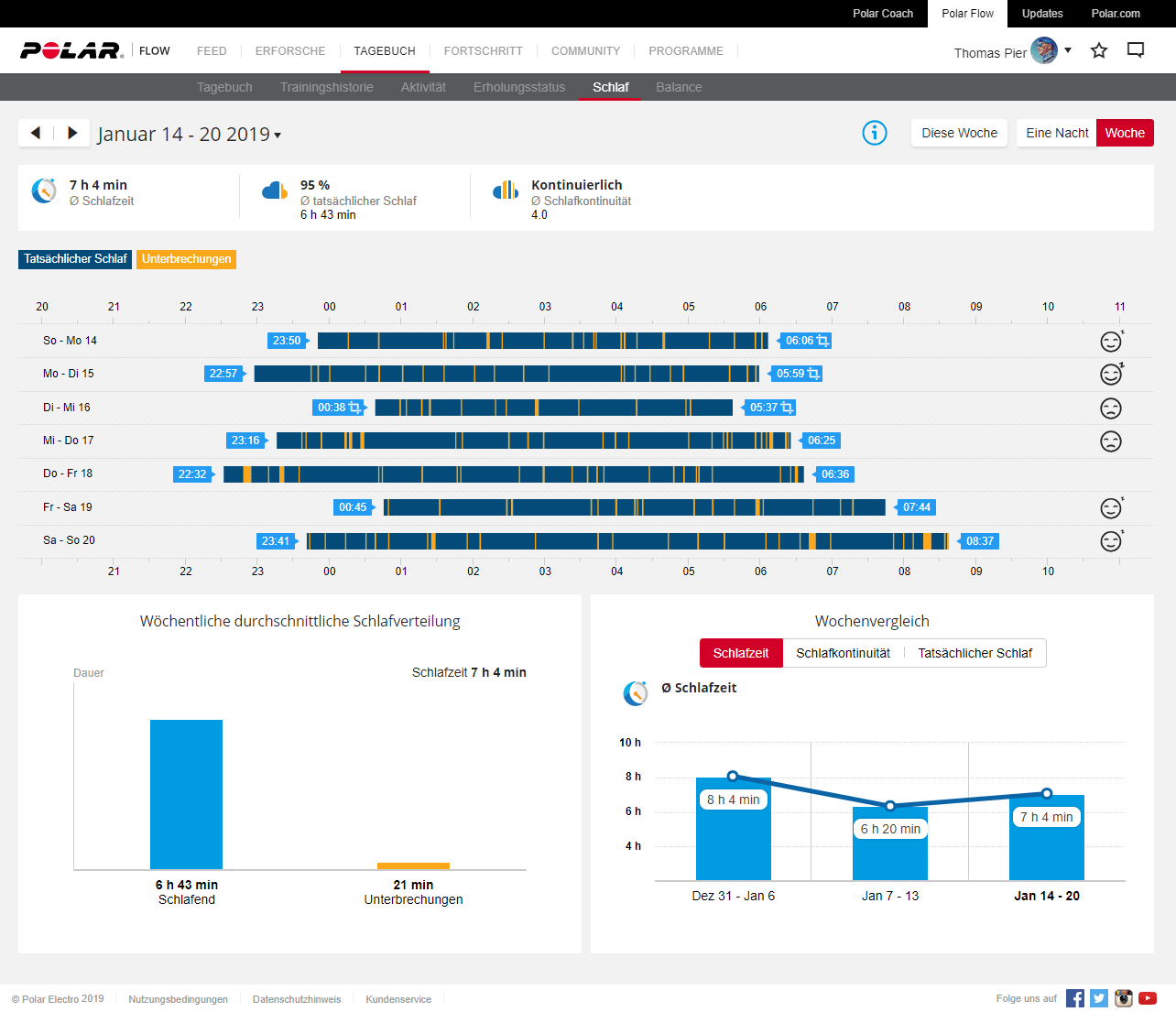
Your own assessment of sleep quality is also entered in the morning recovery questions. If the length of sleep has been determined incorrectly, manual intervention is possible here. This has often been necessary for waking up – the time of falling asleep always seemed to fit me.
I cannot see any direct use of sleep data for other functions, but the sleep quality is taken into account for Recovery Pro. But even so, the automatic tracking of sleep is an important feature to keep track of your nightly recovery.
Running Index
The Running Index offers an automatic assessment of maximum aerobic performance. The number is determined for every run with heart rate monitoring that is longer than 12 minutes and faster than 10 min/km. Similar to VO2max estimates, the value can be used to track the development of your own running performance. Polar also estimates possible target times for 10km, half marathon and marathon runs based on the Running Index.
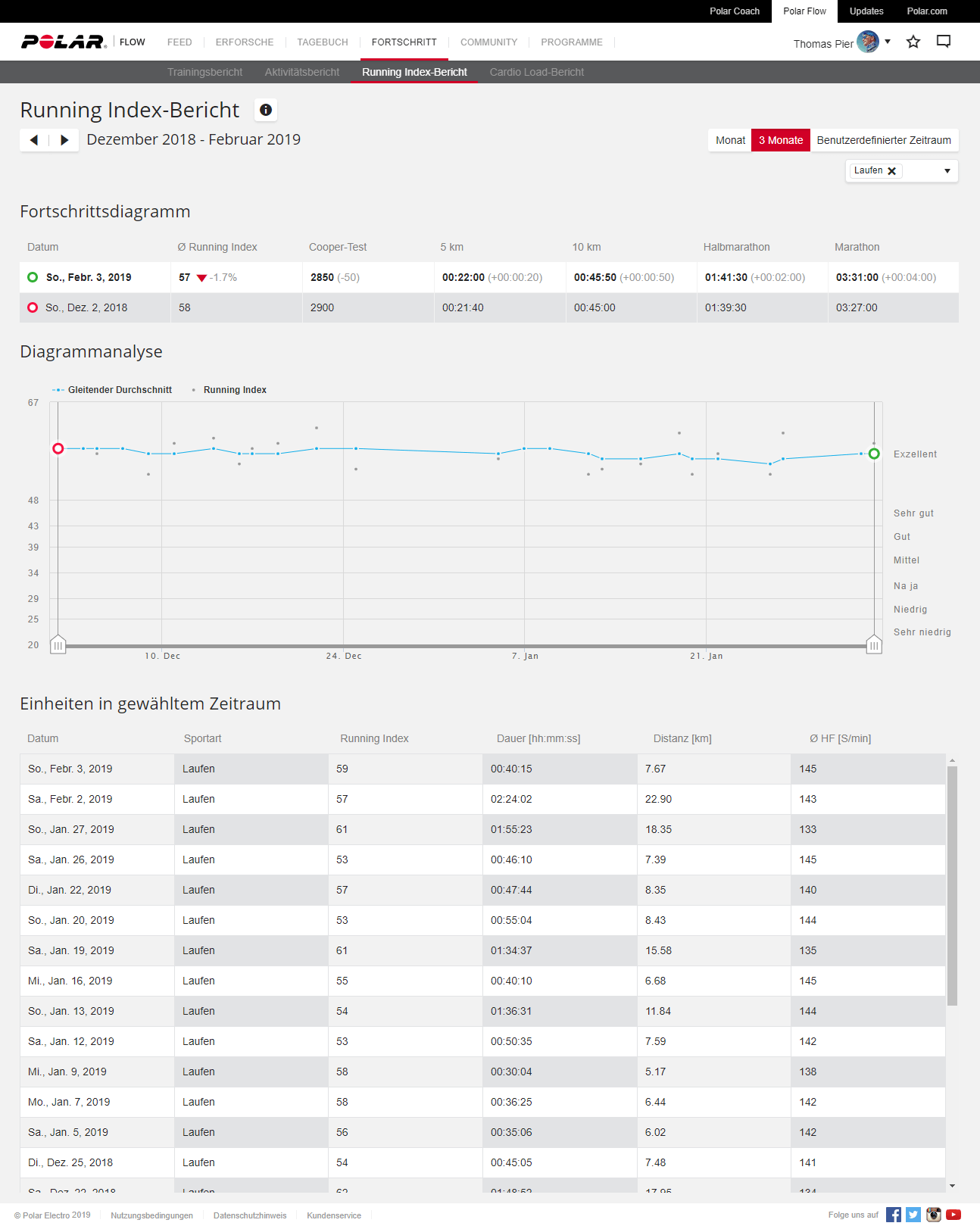
I can’t yet judge how useful these estimates are, since I haven’ t competed with the Vantage V yet. Basically, they seem to me to be within a realistic range.
GPS
As far as GPS quality is concerned, Polar has of course done well with the V800 (see Fellrnr). In the Vantage V, a new GPS chip is now used, which doesn’t let us expect good results from the beginning. In addition, the antenna is now under the display instead of in the wristband, as was still the case with the V800.

To be honest, I’m not a big fan of the comparison with other watches, but of course sometimes I have worn other watches in parallel to get at least an idea of the quality of the Polar. I had a Polar V800, a Garmin Forerunner 935 and a Suunto 9 Baro available for this purpose.

On balance, the Vantage V shows some weaknesses under unfavorable conditions. Even if the deviations in the total distance are negligible, the GPS track is often off track, for example when a leaf canopy interferes with GPS reception. This is also noticeable in the speed fluctuations that occur repeatedly when switching between clear view and forest – the part of the track with clear view of the sky is marked yellow.
With the firmware update 3.0 finally came the functions “Back to Start” and “Route Guidance”. You can now create routes in Polar Flow and have them transferred to your watch. Before you start the running session you select the corresponding track from the newly added menu and have this track on one of the screen pages.

You can choose whether you want to start the route forwards, backwards or at any other point. The watch then leads to the nearest route point. Unfortunately the function was not really testable, because my watch crashed regularly – which it has never done before.
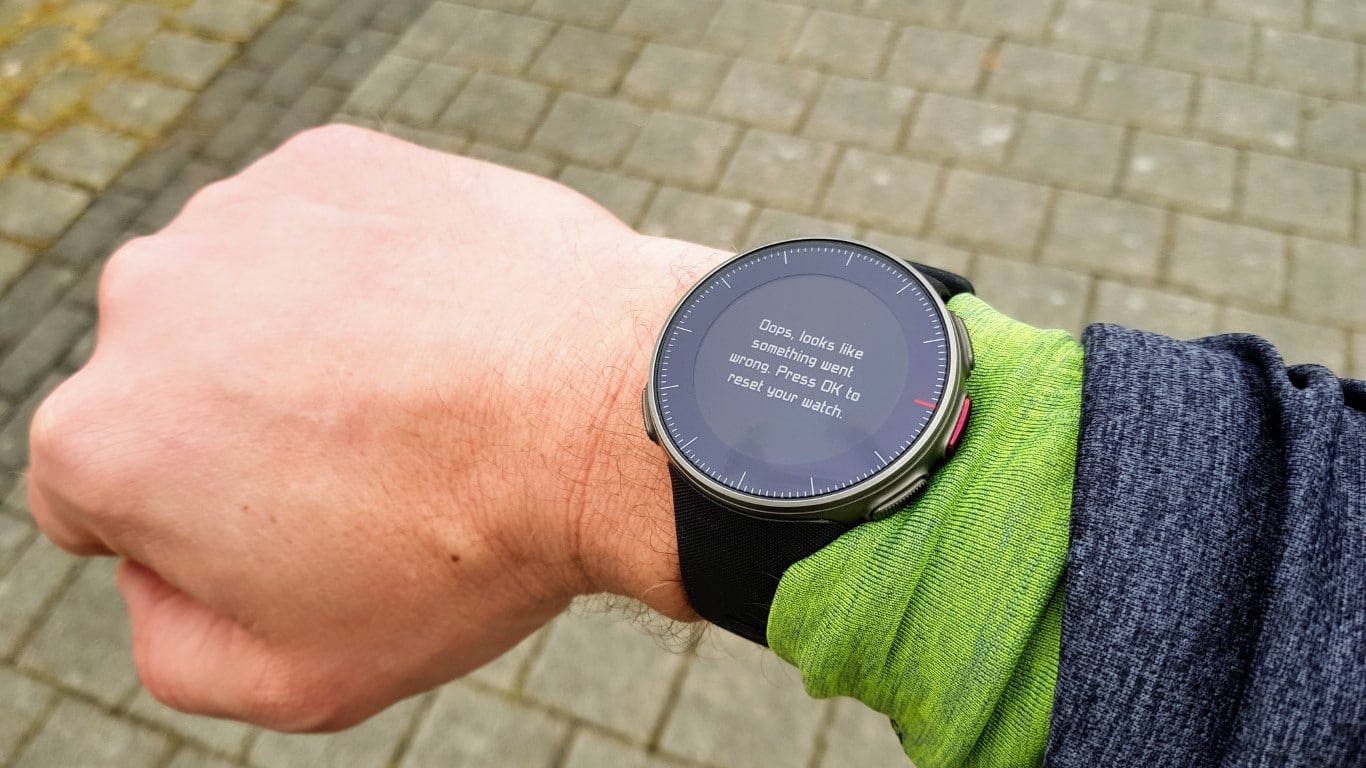
And even if the navigation works, I was supposedly always clearly off track – which doesn’t exactly speak for the GPS quality. The bottom line is that the function is useless to me. Let’s see if Polar can still change something about it via update.
Running Experience
The Polar Vantage V is one of the few watches I can’t get off my wrist ;) I have worn it during the past weeks and months almost exclusively for training and very, very often also in everyday life. I have put it down almost exclusively for charging.
Everyday use
This is of course also due to the fact that the watch is so pleasingly designed that I could even wear it to the office. With the now round display, the matt case and black wristband, it doesn’t immediately stand out as a sports watch on the wrist. Although it is not necessarily small, it still fits just under the shirt cuff.

It also makes sense to wear the watch 24/7 when using it as an ActivityTracker. For me as an office worker there is not so much activity that I would have to consider it as an additional burden in my training. But of course you also get the heart rate during the day and therefore your resting heart rate (day/night).

I also quickly learned to appreciate the sleep tracking. Of course I know how long I slept (approximately) and also how I felt. But to have a log of how I slept and how I felt, so that you can see and follow it even weeks later, is very convenient. For example because you could find out that the cold was preceded not only by a high training load but also by a lack of sleep.
The smart notifications have also been a welcome update, which basically works quite well with Vantage V. You can easily view the notifications (wipe upwards) and delete them either from the clock only, or even on your phone. But you have to find out which of the two delete buttons is intended for which function…
I have actually always set my display to the “Training Load Pro” display. I think it’s simply ingenious to be able to have it directly on my wrist. You also always have the “Recovery Pro” status and the results of the Orthostatic Test with you.
Training
I really liked the display in training. The display of the heart rate in the colored semicircle at the upper edge of the display is pretty well done. It is also pleasant that there is room for four fields not only for the bare numbers but also for e.g. the unit.

Also the planning of the units, their transfer to the clock and then the execution were very good. Unfortunately, it is still not possible to plan training sessions according to power specifications – certainly not far-fetched when you already offer power measurement on your wrist.
Addition (20.06.19)
More and more critical comments on the watch are accumulating (see below). Strangely enough, there seems to be only black or white on the Vantage V: Either one is completely satisfied with the watch or completely dissatisfied. Especially the GPS performance, pace and heart rate are often criticized. Therefore, I wore the Polar today parallel to the currently tested Garmin Forerunner 945. This is only ONE run and not a “study”, but it reflects my impression of the watch as described above.

One thing is for sure: As soon as the Polar Vantage V does not have a good view of the GPS satellites (in this case: wet leaf forest), the quality goes pretty much down. This of course also affects the pace display, which is not only based on the GPS, but also on the acceleration sensors. As far as the measured distance is concerned, there are no deviations.
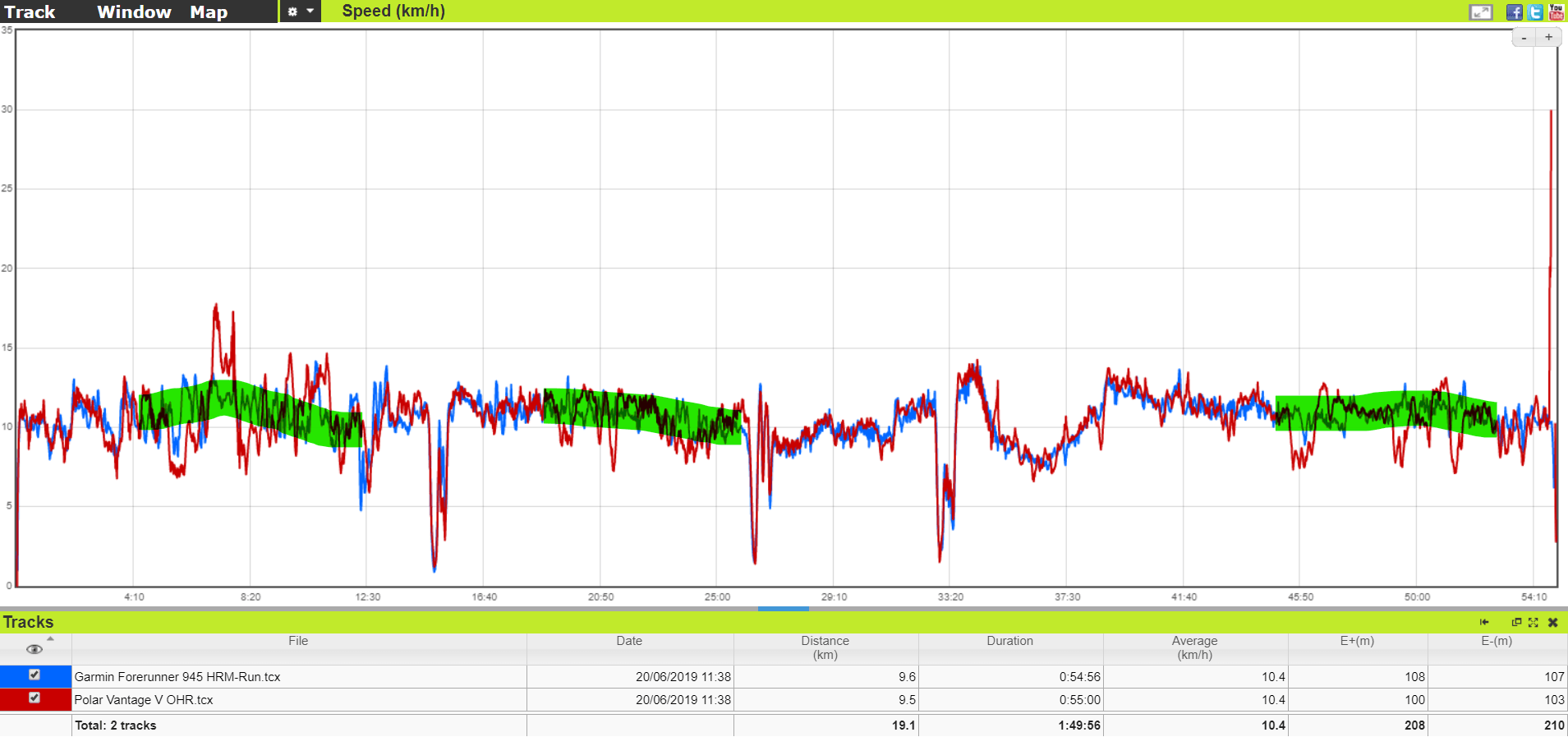
In the pace diagram I marked the sections in green where I walked under trees. The pace values of the Forerunner originate with the Stryd, not the GPS! But you can clearly see how much the Polar watch data deviates from that for the track sections. This was also to be seen live on the watch: always at the transition from forest to open area, the speed of the Vantage V spun, but then caught up again. This is not a reliable indication at any time… On the other hand: would the GPS-based pace values of the Garmin have been so much better?
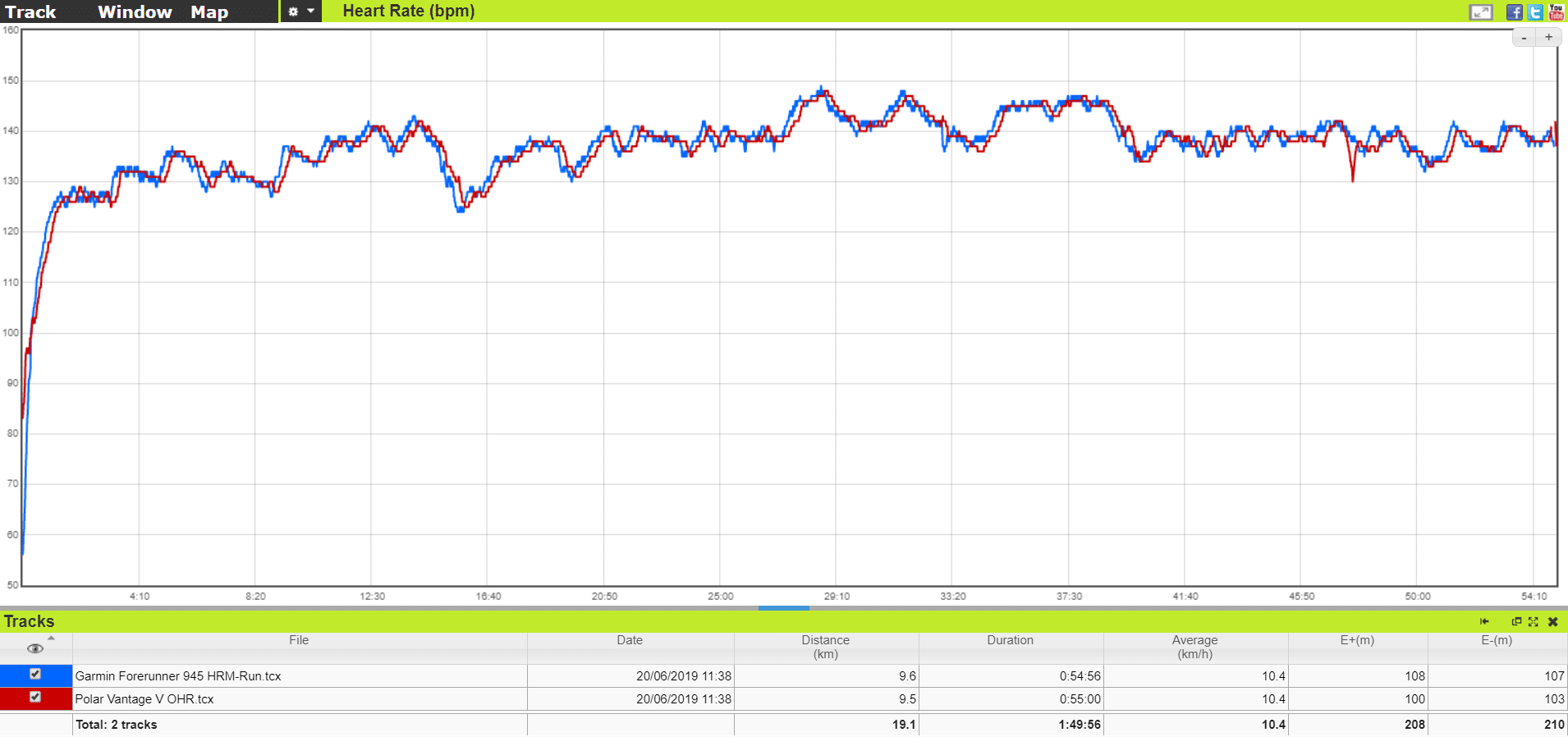
In contrast, the Polar Vantage V did not show any weaknesses when measuring heart rate on the wrist: In direct comparison with the Garmin chest strap, there are no deviations – except for a slight overshoot. This was also clearly visible during the run in a live comparison.
Conclusion
Greatest strength
Real support for training
Each manufacturer tries to offer a unique selling proposition. With Garmin it’s the sheer number of features, Suunto seems to focus on ultra athletes. Polar focuses on active support for the athlete. A multitude of data is collected, interpreted in context and presented to the athlete in a comprehensible way so that concrete actions can be derived from it (Training Load Pro / Recovery Pro). Even though some of the metrics are also available from other manufacturers: I have never seen it so well presented.
Greatest weakness
Still not quite finished
Although Polar has rolled out all the promised features, there are still many open construction sites. To me the navigation function is not usable, the GPS performance is not always optimal and the support of Stryd and other footpods is still expandable (calibration, pace and distance from the pod). And although the watch can handle Running Power natively, training sessions cannot be created with power targets.
By using these affiliate links you get the usual good price and service of the shops and support my work on HarleRunner at the same time. More about me taking part in affiliate programs here.





